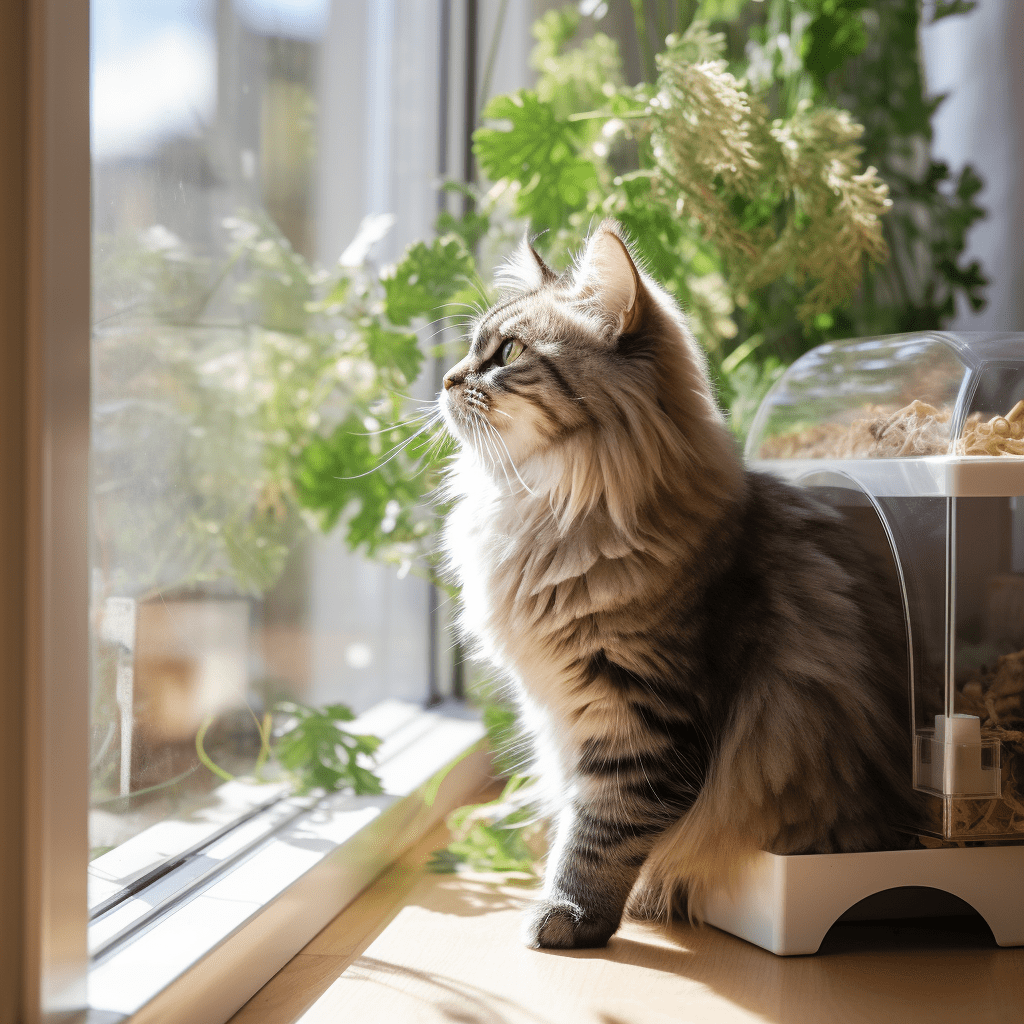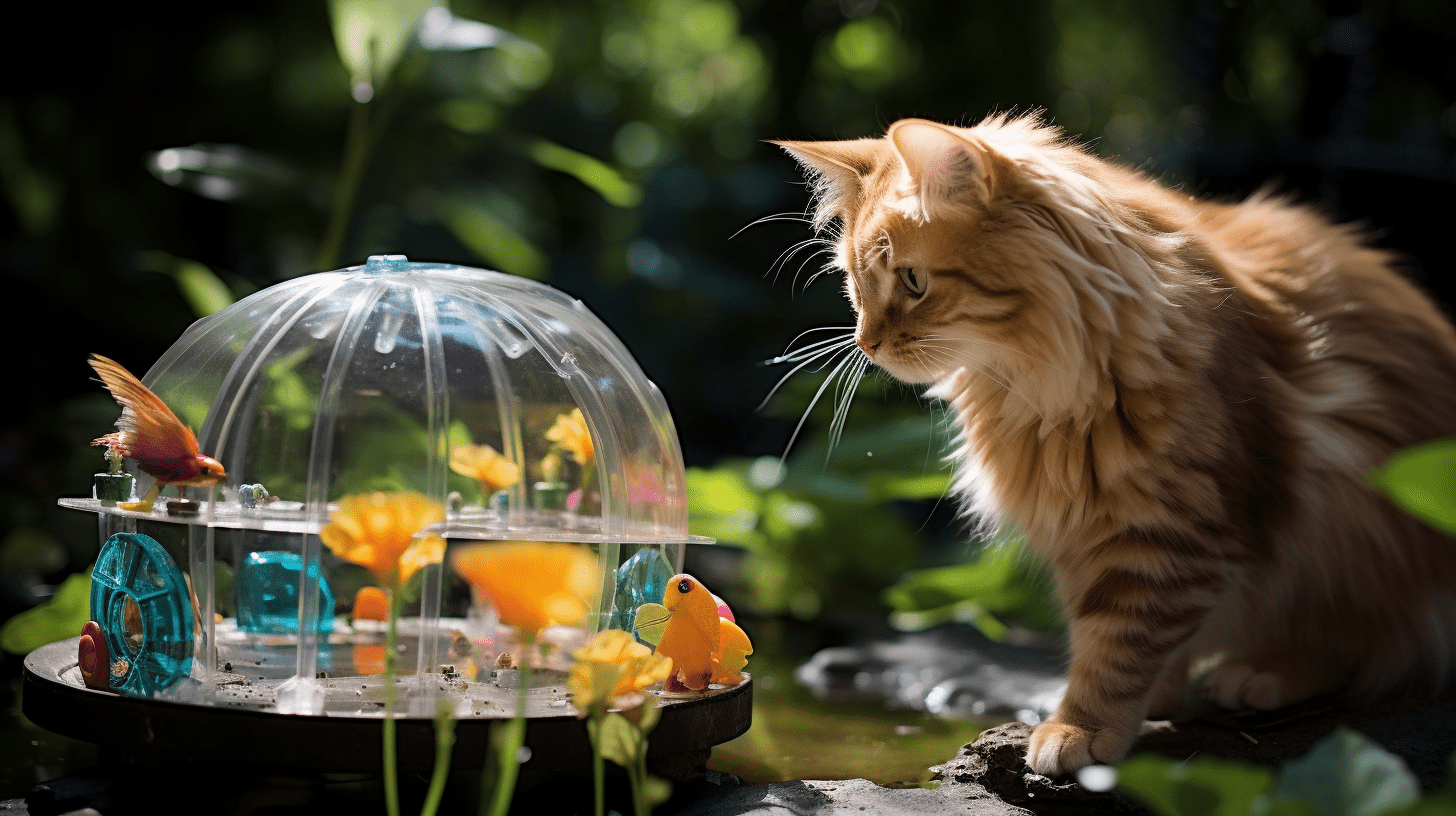The Role of Environmental Enrichment on Cat Health
Introduction to Environmental Enrichment
Environmental enrichment plays a crucial role in enhancing the quality of life for feline companions. Broadly defined, it includes any modifications made to their living spaces to support their natural behaviors and provide mental stimulation. But what exactly does this entail, and how does it benefit cat health?
The commitment to exploring the various facets of environmental enrichment and its impact on beloved pets is evident. From physical health to behavioral well-being, the positive effects are far-reaching. In fact, a well-enriched environment can be an investment in preventing future health challenges in older cats.

Understanding the Feline Psyche
Cats are inherently curious and complex creatures with an innate need to explore and interact with their environment. These needs can be nurtured through proper environmental enrichment, leading to a host of mental health benefits.
| Benefits | Description |
|---|---|
| Cognitive Stimulation | Keeps the mind active, reducing the risk of cognitive decline. |
| Emotional Satisfaction | Fulfills innate feline instincts, promoting a sense of well-being. |
| Behavioral Health | Prevents common behavioral issues linked to boredom and stress. |
By aligning the cat’s environment with their natural predispositions, a setting conducive to their holistic health is fostered. A deeper dive into a cat’s natural behaviors can be found on an in-depth page on cat health.
The Physical Health Benefits of Environmental Enrichment
Environmental enrichment isn’t just about mental health; it has distinct physical advantages as well. By promoting activities that encourage natural feline behavior, such as climbing, scratching, and playing, cats can maintain a healthy weight and develop strong muscles and bones.
Key physical health benefits include:
- Increased activity: Helps prevent obesity, a common health issue in indoor cats.
- Stress reduction: Lowers the incidence of stress-related disorders.
- Immune system boost: A stimulating environment can lead to a stronger immune response.
Proper nutrition is integral to reaping these benefits, and guidance can be found in a guide to cat food and dietary needs.

How Enrichment Reduces Stress in Cats
“A stressed cat is an unhappy cat,” as the saying goes. Inadequate environmental stimulation can result in anxiety and stress, which, if sustained, can evolve into chronic health conditions.
Consider the following points:
- Enrichment offers an outlet for stress: Cats with access to toys, scratch posts, and engagement are less likely to show signs of stress.
- A relaxed cat is a healthier cat: Reduction in stress hormones contributes to overall better health outcomes.
The importance of routine health maintenance, including regular vet check-ups for cats, cannot be overstated in conjunction with an enriched environment.
The Social Aspect: Interaction and Bonding
Enrichment extends beyond physical objects to include social interaction, playing a vital role in a cat’s development and emotional well-being. Positive interactions with humans or other pets can greatly enhance a cat’s social skills and emotional robustness.
- Human interaction: Spend quality time each day engaging in play or grooming.
- Animal companions: Introducing a compatible pet can provide valuable companionship.
Relationship building is at the heart of effective enrichment and is a powerful contributor to a cat’s happiness and health.
Practical Ideas for Enriching Your Cat’s Environment
Not sure where to start? Here are some effective, easy-to-implement enrichment ideas:
- Provide various types of toys that cater to your cat’s hunting instincts.
- Install climbing shelves or cat trees to encourage vertical exploration.
- Invest in puzzle feeders to stimulate their minds during meal times.
For more detailed advice and tips, visit a comprehensive guide on cat waste management, which includes ideas for hygienic enrichment.

The Long-Term Impact on Cat Health and Behavior
The long-term impact of a stimulating environment on cat health is innately positive. Behavioral issues are often alleviated, and the risk of developing certain medical conditions is reduced, leading to a healthier, happier life for the cat.
- Behavioral enrichment: Reduces aggression, spraying, and other undesirable behaviors.
- Health impact: Enrichment is correlated with a lower incidence of diseases like depression and obesity.
By understanding a cat’s behavior, it is possible to identify signs of well-being or distress and adjust their environment accordingly. An insightful look into what a cat’s behavior says about their well-being can be found in a dedicated section.
Intervention Strategies for Various Life Stages
Cats’ needs change as they go through different life stages, and so should their environment. From energetic kittens to serene seniors, every stage requires tailored enrichment strategies to maintain optimal health.
- Kittens (Play and Exploration): Introduce various stimuli for development and learning.
- Adults (Routine and Stability): Maintain a balance between play and rest, introduce challenging toys.
- Seniors (Comfort and Care): Adapt the environment to address mobility or sensory changes, focus on comfort.
By individualizing a cat’s enrichment at each stage, a solid foundation for their health throughout their lives is secured.
Monitoring the Effects of Enrichment on Health
Observing and recording changes in a cat’s behavior and health after implementing enrichment strategies can be incredibly telling. Regular monitoring helps to identify the effectiveness of interventions and whether any adjustments are needed.
Monitoring methods could include:
- Behavioral logs or journals.
- Regular health check-ups with a veterinarian.
- Monitoring weight and physical activity levels.
For more comprehensive health monitoring, consider incorporating regular vet check-ups for cats into the enrichment strategy.

Case Studies: Successful Implementation of Enrichment Programs
Real-life examples serve as powerful testimonials to the effectiveness of environmental enrichment. Studies have shown remarkable improvements in the physical and mental health of cats through the application of targeted enrichment strategies.
- Success stories: Share how enrichment has transformed the lives of certain cats.
- Lessons learned: Key insights and takeaways from each case study.
Collaborating with Veterinarians for Optimal Feline Health
In the pursuit of optimal health for cats, working closely with veterinarians is essential. These professionals can offer valuable insights and recommendations tailored to a cat’s specific needs. This collaboration ensures that all health factors are considered, including the pivotal role of environmental enrichment.
- Expert guidance: Utilize veterinarian expertise to maximize the benefits of enrichment.
- Health integration: Combine enrichment with other health maintenance strategies for a comprehensive wellness plan.
For insights on integrating health strategies, explore “The Importance of Regular Vet Check-Ups for Cats”.
Conclusion: Prioritizing Enrichment for Holistic Health
Enrichment should not be an afterthought, but rather a fundamental component of a cat’s everyday life. By dedicating time and resources to environmental enrichment, the feline friends’ overall well-being and quality of life are greatly enhanced.
Key Takeaways for cat owners include:
- Environmental enrichment is crucial for physical and mental health.
- Cats of all ages benefit from a stimulating living environment.
- Regular vet collaboration is necessary to maintain overall well-being.
The commitment remains to investigate and advocate for enriching cats’ worlds, thus ensuring their happiness and longevity.
Frequently Asked Questions
1. What is environmental enrichment for cats?
Environmental enrichment for cats involves implementing modifications to a cat’s environment that offer mental stimulation and support their natural behaviors.
2. Are there any risks associated with over-stimulating a cat?
While enrichment is generally positive, it’s crucial to observe a cat for signs of overstimulation, such as restlessness or aggression, and make necessary adjustments to their environment.
3. Can indoor cats get enough stimulation?
Absolutely. With creativity and effort, an indoor setting can provide immense stimulation for a cat.
4. How often should toys and enrichment activities be rotated?
To keep a cat interested and engaged, consider regularly changing the setup. Aim for adjustments every few weeks or as needed to maintain a dynamic and stimulating environment.
